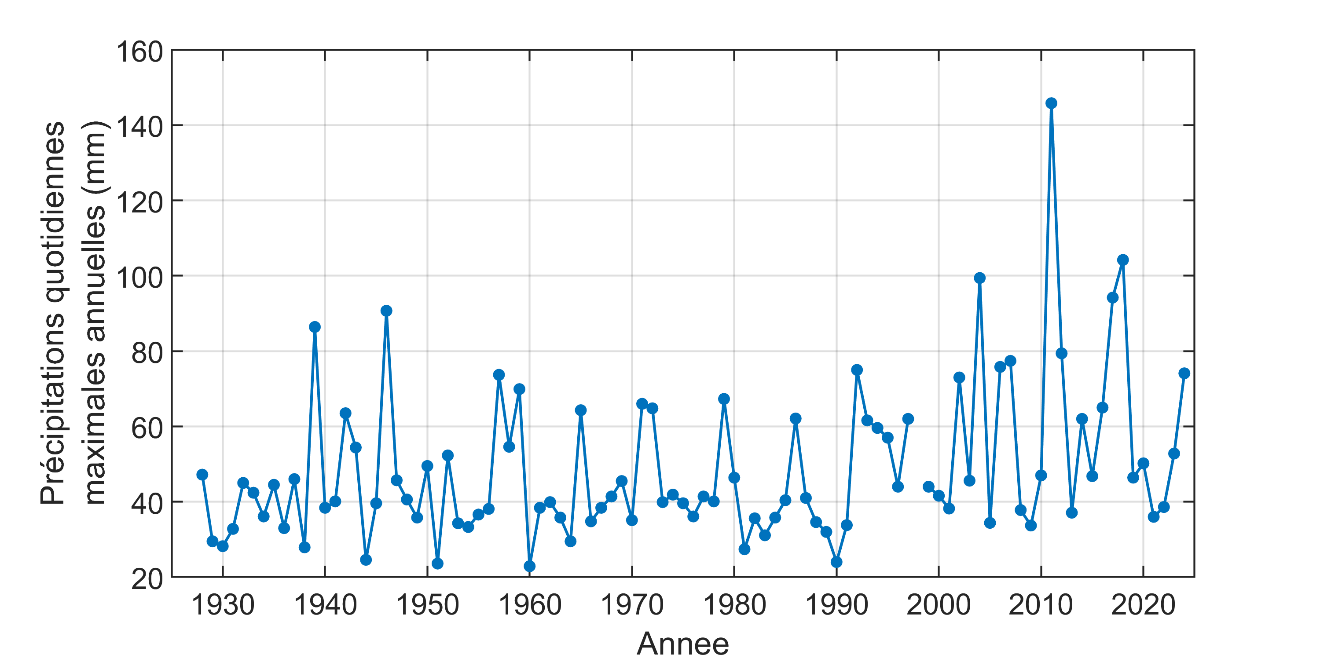2 What is an extreme
An extreme refers to a value that deviates very widely, for example by several standard deviations, from the observed mean values. There is no precise, universal definition of an extreme, but the term generally refers to rare events or conditions of exceptional magnitude. To fully understand the risks that these types of events pose, their frequency and intensity must be estimated.
Extremes are generally estimated in two ways. The first is to identify values above a certain threshold. Taking the example of Figure 1.1, one could choose to look only at the values above 31°C, the threshold beyond which the public health impacts are considered significant.1 A statistical analysis known as the peaks-over-threshold (POT) method can be used in this case2.
The second approach, which is the most widely used, consists of identifying the maximum values recorded during certain sub-periods—often one year. This is known as the block maxima method. Figure 2.1 shows the series of maximum daily precipitation recorded each year at the Chelsea station3 in the Outaouais region. The values exhibit a great deal of interannual variability. Some years are distinguished by exceptional maximum daily precipitation, such as 2011, when more than 140 mm of rain was recorded on June 23. This extraordinary rainfall exceeded the values recorded since 1930 by more than 40 mm! In fact, this event caused several landslides in the Chelsea area.4

Surveillance des impacts des vagues de chaleur extrême sur la santé au Québec à l’été 2018. Institut national de santé publique du Québec.↩︎
See Fact Sheet 7, which discusses the POT method. For further details see al. (2021).↩︎
The Chelsea station (7031360) is operated by Quebec’s Ministère de l’Environnement, de la Lutte contre les changements climatiques, de la Faune et des Parcs (MELCCFP).↩︎
See Glissements de terrain en Outaouais : des résidences sont évacuées.↩︎